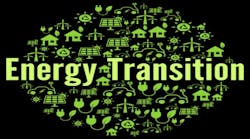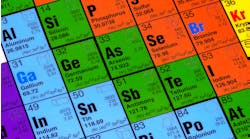By Elfije LeMaitre, vice president & energy, utilities and chemicals lead at Capgemini Americas, and Robert Robinson, senior executive advisor, utilities practice at Capgemini Americas
The climate crisis has particularly shaken the public and private sectors recently. Though the green movement has certainly pervaded the market over the past two decades, the mounting cost-parity of renewable energy-generation technologies, an increased focus on carbon emission rates, and a government-backed infrastructure bill prioritizing clean energy have driven US energy and utilities enterprises to accelerate their energy-transition agendas and commit billions of dollars in new investments.
But to achieve wide-scale energy transition and adapt to changing market expectations set by world leaders at last year’s COP26 summit, energy and utilities companies will have to holistically transform their business practices, starting with their asset portfolios and digital infrastructures. Findings from the Capgemini Research Institute’s “World Energy Markets Observatory” report point to an array of technological capabilities that will help accelerate these transition agendas, enhancing companies’ clean-energy sourcing and allocation—from smart-grid networks and software-enabled solar and energy-storage systems to optimized supply and demand forecasting.
The research suggests that by aligning energy production, delivery and service portfolios with digital-transformation strategies, enterprises can not only improve operations and enhance consumer value, but ultimately scale energy-transition strategies and better forge their path to decarbonization.
This, of course, is a significant undertaking. There are countless capabilities companies will have to introduce or enhance to accelerate their digitally driven energy transition campaigns. To keep pace with competitors in the evolving market and scale clean-energy agendas, here are three transformation trends that will define industry leaders for years to come:
‘The Ultimate Smart Grid’
Defined by Capgemini, the Ultimate Smart Grid is an automated, data-powered grid network, linking workforce devices, like mobile phones and tablets, and network devices, such as batteries, sensors, and switches. As Industry 5.0 ramps up over the next few years, these enhanced smart grids will function as a unified and interoperable network, utilizing a wide range of technological capabilities, including digital twins and cloud computing.
For energy and utilities organizations to keep pace with this trend, they will need to focus on optimizing and upgrading grid designs, evolving advanced asset-management practices, refining grid operations to increase performance and efficiency, installing and securing connected sensors and control systems, and revamping data management to better utilize insights gleaned from the grid. By iteratively developing these solutions, companies can integrate new resources, improve power quality, minimize costs, and enhance grid efficiency and security, among other benefits.
New demand-centric energy platforms
The organizations that will thrive while embarking on energy-transition journeys will be the ones that embrace customers’ preferences for sustainable offerings, such as electric vehicles and smart home technology while reorienting their digital-engagement strategies accordingly. To keep pace with the surging demand for clean-energy offerings and foster customer loyalty, energy and utilities enterprises need to simultaneously accommodate and manage these services via advanced customer platforms—but many organizations are struggling to do just that.
Traditionally, customer platforms have been left in the back office, completely siloed from operational value chains and the network of energy, grid and delivery services and solutions. However, to better engage environmentally conscious consumers, this will need to change. Energy and utilities companies will need to operationalize their customer platforms, utilizing system control and short-term forecasting capabilities to reach customers at scale.
Open data
The ability to freely use, modify and share data across the energy and utilities sectors (and beyond) may soon be fundamental as companies drive energy transition and digital-transformation agendas. This distribution of open data will enable a range of solutions—from widespread system coordination and AI-powered optimizations to real-time consumption monitoring and supply and demand signals—all of which are essential to achieve national and global decarbonization ambitions. For example, physical, energy, and system-operating data will be utilized in the future as investors look to innovatively combine loads, behaviors and capital.
That said, before even considering exposing data externally, many energy and utilities companies will need to address their data-management practices to identify and negate risks or gaps. By doing so, organizations can take full advantage of asset, operating, commercial and market data—ensuring it’s searchable, consistent, secured and readily available. Although restructuring data-management methods and fully utilizing open data will take a thorough, collaborative approach across broad stakeholder ecosystems, the possibility of open data is endless—and essential to achieve energy-transition goals.
In the coming years, the US economy will look to energy and utilities companies to forge the path to decarbonization. Many organizations are already looking toward a new, greener frontier—but to ensure industry-wide change and a net-zero world, energy and utilities enterprises will need to align their existing assets with more advanced digital investments. By tailoring digitally driven transitions strategies to align with vast asset portfolios and meet trends across advanced smart grids, digital platforms, and data sharing, enterprises will be able to decrease their carbon footprints while carving out a stake in the modern energy and utilities market.


